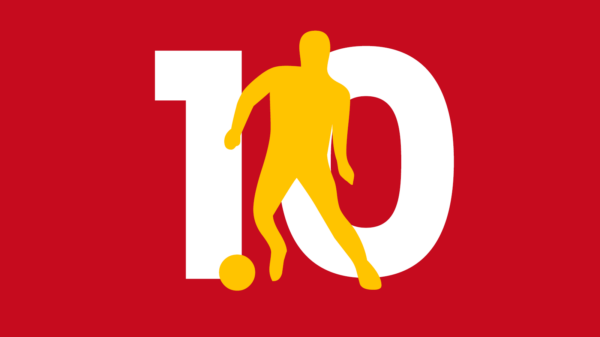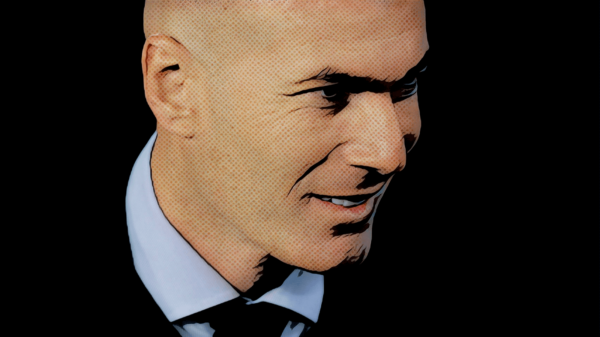
“You can’t separate Spanish football from its politics.”
-Jimmy Burns, Author of ‘La Roja’
Spain had been a notable absentee from the 1938 World Cup. The country was being torn apart by Leftist Republicans and a coalition of Nationalist Forces led by General Francisco Franco. The Spanish Civil War was instrumental in bringing three most powerful Fascist leaders together. In 1937, Mussolini sent a considerable number of men to support his Fascist ally. German involvement in the War began immediately as Adolf Hitler immediately sent powerful air and armoured units to assist Franco and his Nationalist forces along with considerable economic loans. By 1939, Franco was successful in curbing the last outbursts of his Republican resistance, including and importantly, the capital of Catalonia, Barcelona. In one week alone in the last year of struggle, 10,000 members of the anti-Franco brigade were executed in Barcelona. A further 25,000 were shot after the ceasefire in the city.
Before progressing any further, let us establish clarity on ‘Catalonia’ and ‘Basque Country’. Catalonia is part of Spain and comprises the provinces of Barcelona, Girona, Lleida, and Tarragona. The Basque country too, is part of Spain and includes the regions of Álava, Biscay and Gipuzkoa. Both Catalans and Basque people think of themselves as a separate nation from the rest of Spain and have always wanted autonomy under the right to self-determination. We will mainly focus on Catalonia through the course of this article.
The struggle for Catalonian independence continues to date. Even though Catalonia has ‘broad autonomy’, the Catalans are still striving to attain an entirely different nation. After Spain became a republic in 1931, Catalonia was soon given this ‘broad autonomy’. During the Spanish Civil War, Catalonia was an important Republican unit. Franco’s nationalistic group was austerely against the Republicans which meant he was naturally against the idea of the Catalonia keeping its separate entity. Franco revoked Catalonia’s autonomy and through various measures, repressed the Catalan culture- for example: Franco’s regime saw that no club would be allowed to have a non-Spanish name and Barcelona got renamed to ‘Club de Fútbol Barcelona’. Not only that, they were forced to remove the Catalan flag from the club logo. This meant that Franco was not just suppressing the people but also the football clubs which played such an important role in their cause.
Spain remained neutral through the course of the war, but Franco actually supported his Fascist allies. With the demise of the other two shortly after, the Spanish dictator was left politically isolated. Spain had absolutely no international relations at the time. The international community was left angry by the damage, materialistic as well as emotional, caused by the war and could only pin the blame on the person still alive. Even though Spain did not actively participate in the war, Franco’s inclination towards his fellow fascist leaders had not gone unnoticed and the other countries were adamant about keeping Spain in isolation.
Franco had seen the positive effects of football through the exploitation of the sport by Mussolini and Hitler and saw it as a perfect way for Spain to regain some positive global attention and also help him consolidate his rule at home. He also wanted to use it as something which could divert people’s attention from his regime, which in the beginning was marred with bankruptcy and inadequacy. He adopted the capital’s biggest club, Real Madrid to make it a perfect personification of his fascist leadership. He shrewdly observed that by supporting Real Madrid, he would put the operations of FC Barcelona, a symbol of Catalonian pride and honour, out of articulation. Barca, in turn, would become the symbol of republican resistance, against Franco’s oppressive regime and its oppression of the Catalan culture. The sly Franco utilized the antagonism between Real Madrid and Barcelona to his very own advantage.
El Generalísimo was a cruel and vindictive leader, who showed absolutely no mercy to his opposition. Between Barcelona and Real Madrid, there is not merely a rivalry, there is downright hatred. The city of Barcelona still holds the scars of the efficient but ruthless oppression by Franco’s regime.
The murder of the Barcelona Football Club president Josep Sunyol in 1936 was an example of the ruthlessness shown in oppressing the desire to break away from Spain. Sunyol’s death was brought about by a careless mistake. The Barcelona president had the Catalonian flag in the wrong region, as he mistook the nationalist zone to be the Republican one. At a check-point, he waved and shouted ‘Viva la Republica’. Franco’s men were unimpressed and he was killed. Barca supporters, management and players are naturally bound to loathe the club which was in the hands of such a spiteful man.
MORE READING | Football & Fascism: How Italy won the 1934 & 1938 World Cup
Like Hitler and Mussolini, Franco could not tolerate defeat to the side he was in support of. This was not mainly because of propaganda reasons. The efficiency and the greatness of his regime would take a huge blow if his Real side lost to Barcelona. The story of the 1943 semi-finals of the Generalísimo’s Cup (formerly the King’s Cup) illustrates how the footballers of the Catalan club had to give up a comfortable lead to probably save their lives. Barcelona had the home lead of 3-0 after the first leg. For the return leg in Madrid, they apparently got visited by the director of state security. He talked about the generosity shown to them by the State by letting the Catalans be part of the country and subtly threatened them. The players understood and dramatically lost the second leg 11-1.
Barcelona supporters were not allowed to carry flags inside the stadium. The extremists who did, had their flags taken away and were arrested immediately. Catalonians were brutally repressed by Franco and his men to such an extent that they were not allowed to speak their own language. The only place where they could do so was the football ground and hence Barcelona football club became an extension and an important part of their nationalistic and anti-Franco struggle.
The advent of television created new propaganda possibilities for Franco. He could use football’s mass appeal to his advantage in an even bigger fashion than the one he had in mind initially. Games were broadcasted, especially when there were signs of a potential riot or another form of unrest, so that people kept off the roads. But only Real Madrid’s games were given this privilege. Up until the early 1980’s the government controlled TV broadcasting and only showed Real Madrid which meant that people all across Spain were forced to watch Los Blancos each weekend. Part of the somewhat negative strategy to use football’s appeal was that when there was some political problem, the week’s biggest match was fixed. Naturally, a major part of people’s attention got diverted to the match and the administrative predicament was receded into the background.
It is interesting to note that in the 1940s, Atlético de Madrid – who were then called Atlético Aviación because of their merger with the Spanish Air Force – were more closely aligned to Franco’s regime than their city rivals Real Madrid. In fact, several of the club’s players were from the air corps.
At first Franco’s adoption of Real Madrid failed to deliver any results on the pitch. Between 1939 and 1954, Los Blancos failed to win a single league title; Barcelona won five. However, the transfer of Alfredo di Stéfano to the Madrid club would allow Franco’s team to make amends in this regard. This transfer has corruption, backroom politics and Franco’s sardonic and sadistic nature written all over it. Di Stefano’s move to Madrid would become one of the greatest football scandals in football history.
In the 50s, ‘the blonde arrow’, as di Stefano came to be known, had quite a reputation. He was regarded as one of the greatest footballers of his time. He was the star player of the Colombian team Millonarios and captivated Spain during a friendly tournament in Madrid. Barcelona and Real Madrid both became interested in the player but Barca were the first ones to approach him. Negotiations advanced smoothly for the Catalan club with di Stefano even playing two or three friendlies for the Catalan side. But Franco would do everything in his power to rope the talismanic player from within Barca’s ranks. The Barcelona president Marti Carretó was apparently captured by El Generalísimo’s men in a Madrid hotel and told that his textile company would be scrutinized harshly and get heavy tax inspections unless he handed over di Stefano to Real. A deal was even negotiated between the two rival clubs stating that the player should play alternate seasons for the two clubs! Carretó saw it as a ludicrous suggestion and frustratingly enough gave up on di Stefano. In a rather cruel turn of events for FC Barcelona, a month later di Stefano scored four goals against them. The Argentinean maintains till date, that he only played for the people and didn’t keep the political situations of the time in mind, nor wave a particular political flag. After the acquisition of di Stefano, Real Madrid managed to win five successive European titles.
Local team Espanyol have also been Barclona’s fierce enemies since the early 20th century, notably throughout the Franco regime. Most of Barcelona’s citizens saw Espanyol’s entity as one of ‘compliers of Franco’s reign’. Apparently, during the civil war, a prominent Espanyol supporter group joined the side of the fascist Falangists and during the independence movement in 1918 (the supporters of FC Barcelona were the revolutionaries looking to gain autonomy for their land), Espanyol made a petition against it, further aggravating tensions.
Franco also used football successfully as a means of antagonizing his Soviet enemies in the international political arena. He encouraged footballers defecting from Communist nations to come and find refuge in Spain. The legendary Hungarian Ferenc Puskas would also play alongside di Stefano for Real Madrid. This also got him the attention of the world power United States of America as the world was in the midst of the peak of the Cold War.
Real Madrid was used shrewdly to promote Spain’s image abroad. It created a successful and glamorous image of Spain abroad. It has to be noted that Spain was in political isolation at the time and Franco cleverly used Real Madrid as a means of getting the attention of his European neighbours.
Like at Real Madrid, Franco sought to project a glorious image of Spain to its citizens through the national team. To achieve this, he nationalized the world’s best players in order to ensure victory. The nationalization included that of the Czech Kubala and Hungarian Ferenc Puskas. Di Stéfano too, in 1956, despite having previously represented both Argentina and Colombia. However, none of these players ever played in a World Cup, through some circumstance or another.
Franco’s hatred for the Soviet Union was well known. They had after all provided arms and aid to Catalonia during the civil war. The Soviet football team of the time was one of the best ones in the world then and afraid of risking a defeat to them, Franco withdrew Spain from the 1960 European Championship in France. The 1964 European Championship saw Spain hosting the event. The Soviet Union and Spain met in the final of the tournament which was being rightly labelled as the clash between Communism and Fascism. Spain won the match and the tournament with an entirely Spanish-born side and the Spanish press drew parallels to the Nationalists’ triumph with overtones that ‘El Generalísimo’s regime had saved the country as a whole’.
It is this historical & political battle than many have cited as the reason for Spain’s failure at the international stage. With a national team filled with primarily Real & Barcelona players, it seemed that subconsciously the two sets of players weren’t able to unite. All those notions though, were changed when Spain triumphed in 2008 with the European Championship, backing it up with two more major trophies and going in to 2014 as one of the favourites. The political history remains embroiled in Spanish football, but at the International level (as far as the players are concerned), things seem much different.
Politics have been rooted into the Spanish game from the very beginning and has been embedded into the culture of each football fan ever since. This exists to date and was illustrated during the 2008 Copa del Rey final between FC Barcelona and Athletic Bilbao, when the Catalans and Basque people booed and jeered the Spanish national anthem clearly demonstrating their feelings towards the Madrid based government. Therefore, politics in Spain, with over 15 autonomous communities each sharing unique beliefs, is an extremely intricate and complex case. It is a much greater topic and can’t just be restricted to General Franco. But the ruthless dictator, like his contemporaries Benito Mussolini and Adolf Hitler, was successful in exploiting and realizing football’s huge potential. While football was used by Hitler and more so, Mussolini to enhance nationalistic values through the country, it was employed by Franco as a measure to show to his Republican opposition as another facet of his superiority. He was able to use it as a key tool for creating, rather revamping, his international image.
References:
BBC Documentary: Football and Fascism



























































